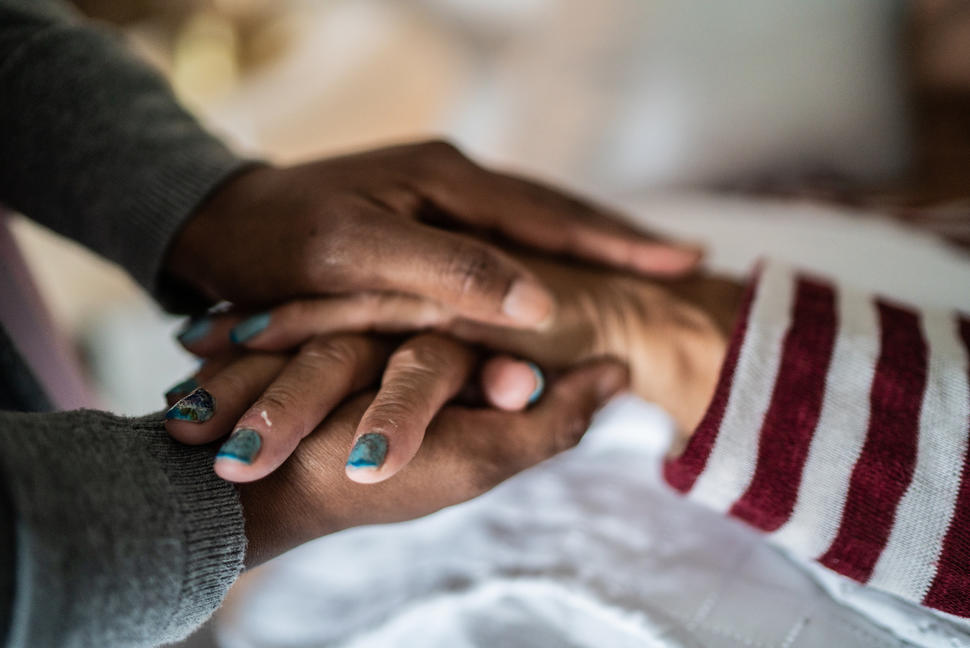Study Finds Disparities in Access to Opioids for Cancer Pain at End of Life
, by Elia Ben-Ari
Black and Hispanic patients with cancer who are nearing the end of life are less likely than White patients to get needed opioid medications to control their pain, new study results show.
In the study, which looked at opioid prescriptions filled from 2007 to 2019, Black and Hispanic patients received fewer opioids and at lower doses than White patients. The disparities were particularly striking for Black men. Black patients were also more likely than White patients to undergo urine tests that screen for drugs, the researchers found.
The study did not identify the cause of these differences. But the differences were seen even when researchers considered factors such as people’s income levels and where they lived.
The results were published January 10 in the Journal of Clinical Oncology.
“Accumulated evidence over three decades has demonstrated that Black and Hispanic people are less likely to receive opioids for pain,” said Salimah Meghani, Ph.D., R.N., a palliative care expert and health equity researcher at the University of Pennsylvania School of Nursing who was not involved in the study.
The new findings “are very consistent with the picture we already have” for disparities in access to opioids for pain, Dr. Meghani said. The study’s results are particularly significant, she said, because patients with cancer often experience a great deal of pain at the end of life, as well as symptoms such as difficulty breathing, that are managed with opioids.
“I think it's everyone's greatest fear that at the end of life they'll be in pain, and the pain won’t be relieved,” said Andrea Enzinger, M.D., of the Dana-Farber Cancer Institute, who led the study. “And every guideline we have states that opioids are the treatment of choice for moderate to severe pain from cancer or cancer treatment,” especially at the end of life.
More work is needed to figure out which of many possible causes—including physician bias, barriers to accessing opioid medications, and policies intended to prevent opioid misuse—are the main drivers of the disparities, Dr. Enzinger said.
“Identifying strategies for improving communication and the patient-clinician relationship, for example, could also help address inequities in the way cancer pain is treated and managed throughout cancer survivorship, including at the end of life,” said Amanda Acevedo, Ph.D., of NCI’s Behavioral Research Program, who was not involved in the study.
Unintended targets of opioid regulations
Dr. Enzinger and her colleagues previously reported that, between 2007 and 2017, the proportion of people with cancer who filled an opioid prescription near the end of life dropped.
That period covered the years since the US opioid epidemic was recognized, which resulted in tighter regulation of opioid prescribing and changes in public and health care provider attitudes about opioids.
An unintended consequence of the new laws and regulations is that it has become much harder for people with cancer to get pain medications.
Earlier studies, including a 2012 analysis by Dr. Meghani that summarized 20 years of research evidence, revealed long-standing racial and ethnic disparities in opioid and other drug treatment for pain. So Dr. Enzinger’s team wanted to see if people with cancer at the end of life also experience such inequities.
“We also wanted to know the state of disparities in opioid access [in the years] since we've had these seismic shifts in regulations and a heightened concern about the risk of opioid misuse,” Dr. Enzinger said.
To find out, her team analyzed data from a random sample of Black, Hispanic, and White Medicare beneficiaries over the age of 65 with poor-prognosis cancers who had died between 2007 and 2019. Of the 318,549 people included in the study, about 9% were Black, 5% were Hispanic, and the rest were non-Hispanic White.
The researchers looked at the number of opioid prescriptions filled for each group within 30 days of death or before enrollment in hospice. They further examined the prescriptions by whether they were for short-acting opioids, such as oxycodone and morphine, or long-acting opioids, such as fentanyl patches and OxyContin.
The team also examined the doses of opioid medications received by Black, Hispanic, and White patients. Finally, they looked at the number of patients that underwent urine drug screening over the study period.
Disparities in opioid access and drug testing are modest but meaningful
During the 12 years studied, the overall proportion of people with poor-prognosis cancers who had at least one prescription filled for any opioid fell from about 42% to 33%. The proportion of people who had at least one prescription filled for a long-acting opioid and the total dose of opioid filled per person also went down.
Over this same period, Black and Hispanic patients were less likely than White patients to have filled a prescription for any opioid or for a long-acting opioid.
At first glance, the size of the differences in opioid use between groups may seem modest, Dr. Enzinger said. But the differences are meaningful, she continued, especially given that, by 2019, only 33% of people with terminal cancer overall had a prescription filled for any opioid and less than 10% had one filled for long-acting opioids.
Long-acting drugs provide sustained release of the medication, so “patients and caregivers don't have to watch the clock or wake themselves up in the middle of the night to [take another dose] and keep their pain under control,” Dr. Enzinger explained. However, there are often more prescribing restrictions for long-acting opioids and insurance companies are less likely to cover the cost of these drugs.
Black and Hispanic people also received lower total and average daily doses of opioids compared with White patients throughout the study period, except in 2019, when access to long-acting opioids was the same for Hispanic and White patients.
For Black patients, the difference in average daily dose “was equivalent to about one less 5-milligram tablet of oxycodone per day for their last month of life, which is pretty meaningful,” Dr. Enzinger said.
When the researchers looked at where the disparities in access to opioids were greatest, they found that Black men were disproportionately affected, with the greatest differences seen between Black and White men.
The team also found that urine drug screening of people with terminal cancer went up 10-fold from 2007 to 2019, with Black patients being tested more often than White or Hispanic patients.
Yet there are no guidelines for when and how often people who are receiving opioids for cancer pain should undergo urine drug screening. “Which begs the question of what factors are leading providers to incorporate urine drug screening into cancer care,” Dr. Acevedo said.
Determining the role of clinician bias and other factors
One limitation of the study, Dr. Acevedo said, is that it did not examine disparities across other underserved or understudied groups, such as children, adolescents, and young adults with advanced cancer. It also did not examine patient beliefs about their pain and its treatment at the end of life, she noted.
In addition, the study did not include information on the number of opioid prescriptions patients received, only on prescriptions filled. “This does not account for [the possibility of] somebody not filling a prescription if they have one,” Dr. Meghani said.
Data on opioid prescribing could better indicate the role of physician bias in treating pain in people with terminal cancer, Dr. Meghani said.
Her own studies over many years suggest that “one of the main factors when it comes to differences in opioid prescribing is clinician bias, and this may occur despite patients having health insurance and access to medicines to treat pain,” she continued. And unconscious biases are more likely to come into play when physicians feel overloaded by work and regulations and don’t have enough time with each patient, she noted.
Furthermore, Dr. Enzinger and her colleagues wrote, prior research suggests that certain biases and beliefs, such as a false belief that Black patients are less sensitive to pain, are linked with disparities in how physicians and medical students assess and treat pain.
Many factors other than physician bias can affect whether a person fills a prescription for opioids, she said. For example, pharmacies in predominantly non-White neighborhoods tend to have fewer opioids in stock, or there may be inequities in getting help when people have problems with insurance coverage.
In addition, Dr. Meghani said, “there is so much fear and stigma around opioids that [some] patients are doing everything in their power to take the minimum amount.” And not taking opioids in the way they are prescribed is unsafe, she said.
Better ways needed for tracking and managing cancer pain
It’s already known that disparities in managing cancer pain “are likely caused by a number of intersecting factors,” including those involving public policy, health care systems, and patient–provider interactions, Dr. Acevedo said. “Because of that, we're going to need solutions that address these multiple levels of influence.”
The study has important implications for ensuring that cancer pain is managed equitably, Dr. Meghani said. Health systems need better approaches for tracking patients’ pain and ability to function physically and mentally. Better systems are also needed to ensure that patients have access to nonopioid treatments and to opioids, when appropriate, she said.
“Being in pain, particularly at the end of life, is one of the hugest hurdles to having a good quality of life or a good quality of death,” Dr. Enzinger said. “It’s of the utmost importance that terminal cancer patients have equitable access” to opioids.

